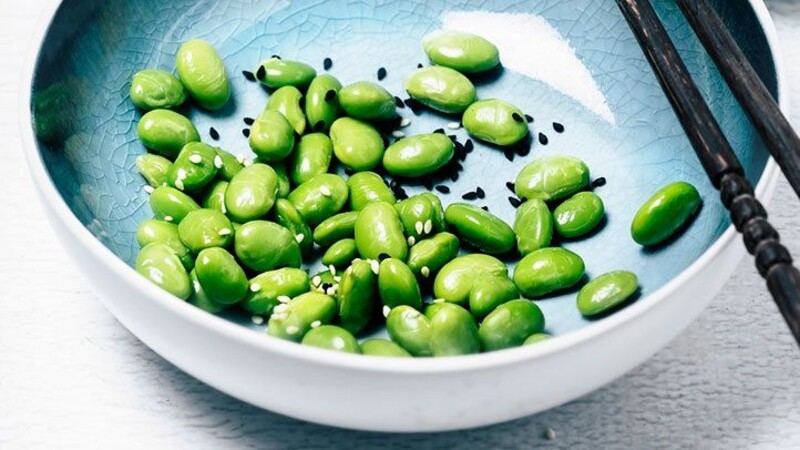A world that prioritizes health and sustainability recognizes the significant value of plant-based proteins. These alternatives, packed with nutrients, provide not just essential amino acids but also contribute to a diet balanced effectively. When you understand how important it is to incorporate these plant-based proteins into your meals, it can truly transform your nutritional journey. Let us delve into the exploration of these eight foods. Concurrently, we shall identify effective methods to integrate them as a dietary staple.
1. Lentils - A Protein Powerhouse
Lentils, a nutritional powerhouse not only offer an abundance of protein but are also rich in fiber. This fibrous richness aids digestion and fosters cardiovascular health. Moreover, lentils supply a significant amount of iron and folate, essential for maintaining overall well-being. Lentils, with their adaptability to numerous culinary creations, ranging from hearty lentil soups to inventive salads, are a versatile and flavorful addition to your diet. Their earthy taste coupled with nutritional benefits proves an excellent choice for those who desire a plant-based protein boost. It is both palatable and healthy.
On a separate note, various types of lentils such as brown, green, red, and black have unique texture and flavor profiles. Experimenting with these different varieties not only diversifies your meals. It also introduces an array of nutrients. To illustrate, red lentils undergo faster cooking times and yield a softer texture, whereas green or brown varieties maintain their form admirably in salads or stews. Diversifying your lentil choices enhances both the taste and nutritional value of your dishes.
- Consideration: Soaking lentils before cooking can aid in digestion and reduce cooking time.
- Caution: Excessive consumption of raw lentils might cause digestive discomfort due to their high fiber content.
2. Quinoa - A Complete Protein Source
Originating from South America, Quinoa earns celebration for its taste and status as a complete protein source. In addition to the nine essential amino acids, it presents an impressive variety of nutrients such as magnesium, iron, and even fiber. Its versatility manifests in salads where it contributes a delightful crunch or in stir-fries absorbing flavors for an utterly satisfying meal. Embracing quinoa means embracing a nutrient-rich, gluten-free grain that caters to diverse dietary needs.
Moreover, you can utilize quinoa beyond savory dishes harnessing its unique texture. Incorporate it into breakfast bowls, muffins, and even desserts. Thus, expanding the scope of culinary applications. The nutty flavor inherent to quinoa harmonizes with both sweet and savory elements in a dish. Consequently, this versatile grain adds delight to any meal.
- Consideration: Rinsing quinoa before cooking removes its natural coating, called saponin, which can have a bitter taste.
- Caution: While quinoa is gluten-free, cross-contamination is possible during processing, so check labels for gluten-sensitive diets.
3. Chickpeas - Versatility at Its Best
Commonly known as garbanzo beans, chickpeas impart not only plant-based protein but also contribute to muscle health and weight management. This is a testament to their versatile nutritional value. Abundantly rich in fiber and essential minerals, they bolster digestive health, providing sustained energy at the same time. In addition to hummus and curries, the undisputed champions of chickpea cuisine, you can incorporate these legumes into your diet with crunchy roasted snacks or creative salads that showcase their adaptability. It's all about that delightful crunch!

Try roasting chickpeas with your preferred spices or seasoning them lightly with olive oil and sea salt for a protein-packed snack. These crispy delights offer an enriching, nutrient-rich substitute for typical snacks. Moreover, experimentation with diverse varieties like black or green chickpeas can impart novel flavors and textures into your meals.
- Consideration: Canned chickpeas offer convenience, but rinsing them can reduce sodium content.
- Caution: Overconsumption of chickpeas may lead to bloating due to their high fiber content.
4. Tofu - A Soy-Based Protein Alternative
Tofu, derived from soybeans, a protein-dense and versatile food, proves suitable for various diets. Its neutral taste absorbs flavors easily. This quality allows it to go well with diverse culinary creations. Including tofu in desserts beyond the traditional stir-fries and salads not only highlights its adaptability but also provides a protein boost for both sweet and savory dishes. Tofu is not just a meat substitute, it's a canvas for culinary creativity.
In the preparation of tofu, one can alter its texture by pressing or freezing it. This provides a range of options for different recipes. For instance, when you press tofu, it achieves a firmer consistency ideal for grilling or stir-frying. On the other hand, if frozen, the texture will become sponge-like and absorb marinades to enhance flavor profiles dramatically. Adding an experimental aspect to your plant-based culinary voyage is as simple as manipulating various tofu textures.
- Consideration: Marinating tofu for at least 30 minutes enhances its flavor absorption.
- Caution: Consuming tofu in moderation is advised, as it may contain compounds that interfere with nutrient absorption.
5. Nuts and Seeds - Nature's Protein Bounty
Beyond providing protein, nuts, and seeds offer crucial fats and an abundance of micronutrients. They are a powerhouse for health. Almonds, chia seeds, as well as hemp seeds, stand out among their counterparts. Not only do they boast high levels of proteins but also harbor rich reserves of antioxidants and omega-3 fatty acids. To augment both the flavor and nutritional content of your meals, integrate these gems into your diet through smoothies, yogurt bowls, or salads.
Incorporating nuts and seeds into your diet enhances satiety, thereby facilitating weight management. Yet, it is crucial to exercise portion control as they pack a high caloric density. Furthermore, comprehending the specific advantages of certain nuts such as almonds' heart-healthy monounsaturated fats or chia seeds' omega-3 fatty acids empowers you in aligning dietary choices with your unique health objectives.
- Consideration: Soaking nuts and seeds can enhance their digestibility and nutrient absorption.
- Caution: Allergic reactions to nuts and seeds are possible, so be mindful of individual sensitivities.
6. Spinach - Green Goodness with Protein
The often lauded spinach, a leafy green known for its rich vitamin and mineral content, surprisingly harbors an abundance of plant-based protein. Its mild taste accommodates effortless incorporation into diverse dishes, salads, and smoothies, and even serves as the quintessential side dish. Infuse your recipes with hidden spinach to elevate the nutrient content without sacrificing flavor. This step makes it a crucial element in maintaining balance within your diet, one that is centered around plants.
Spinach, rich in vitamins A and C beyond its protein content, provides crucial support for immune health and skin integrity. The versatile nature of spinach allows one to incorporate it into a plethora of recipes without overpowering existing flavors. This makes spinach an ideal choice for individuals seeking to augment their diet with plant-based goodness.
- Consideration: Cooking spinach enhances the bioavailability of certain nutrients.
- Caution: Oxalates in spinach may interfere with calcium absorption for those prone to kidney stones.
7. Edamame - Green Soybeans for Protein Punch

Young soybeans, known as edamame, deliver not only a delectable nutty flavor but also an impressive protein content. You can relish the taste of edamame on its own or incorporate it into your dishes like salads and stir-fries. These green legumes provide more than just proteins. They also supply essential vitamins and minerals that enhance overall health, a gratifying supplement for those following plant-based diets.
Edamame, rich in folate and vitamin K beyond their protein content, supports multiple health aspects such as bone health and blood clotting. Their nutritional value remains intact through boiling or steaming. This preservation method guarantees you derive maximum benefits from this plant-based protein source.
- Consideration: Opt for organic edamame to minimize exposure to pesticides.
- Caution: Edamame is a soy product, so individuals with soy allergies should exercise caution.
8. Seitan - A Protein-Rich Wheat Gluten Option
Plant-based eaters are increasingly embracing seitan, a gluten-derived meat substitute rich in protein. Possessing both chewy texture and flavor-absorption capabilities, seitan can serve as the protein-packed focal point of numerous dishes. Incorporate it into stir-fries. Layer it within sandwiches or even add it to curries for a gratifying meal that echoes meat's textural experience while delivering ample proteins.
Seitan, rich in protein and offering a satisfyingly meaty texture, appeases the carnivorous cravings of individuals transitioning to plant-based diets. By preparing seitan at home, you can tailor the ingredients precisely. This guarantees an adaptable source of wholesome protein that perfectly dovetails with your dietary preferences.
- Consideration: Individuals with gluten sensitivity or celiac disease should avoid seitan.
- Caution: Moderation is advised due to the potential for overconsumption of gluten, which may lead to digestive issues.
Conclusion
Embarking on a healthier lifestyle can indeed become an exhilarating and gratifying journey by integrating these plant-based protein sources into your daily meals. Engage in experiments with diverse recipes, and cooking methods, all to discover the perfect balance that satisfies your taste buds. These foods not only provide delicious options for fulfilling protein requirements but also sustainably so. This is applicable whether you are a seasoned plant-based eater or someone just starting in this dietary transition. Embrace the variety and abundance of plant-based proteins. They offer a nourishing, wholesome culinary experience, an essential addition to your table.







